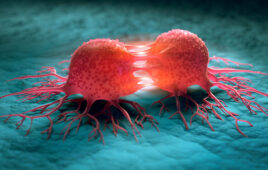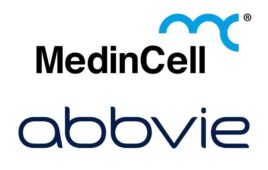Neil Canavan
Contributing Editor
New research into diabetes pathology might make drug discovery for diabetes a little sweeter.
How sweet it is? Sugar pies, super-sized fries, and binge buys have triggered antagonistic sugar highs and desperate lows, charting the landscape of a new global epidemic: Planet Diabetes. The World Health Organization currently estimates 170 million people afflicted world-wide—a patient population expected to double by the year 2030. The ramifications of this trend—economically, socially, and clinically—are as varied as the mechanisms of the disease itself. Like it or not, one thing is certain: If you’re a diabetes researcher, you have job security.
To gauge the number and type of positions available, one needs only contact the Joslin Diabetes Center, Boston. “We are the largest self-contained research institute for diabetes globally,” says George King, MD, director of research at Joslin. “We have 30-plus labs spanning 11 different sections of research.” King’s investigations run the gamut: basic immunology, molecular interactions of hormones, vascular cell biology, and glycemic effects on mental health. The list is exhaustive, ranging from the thoughts in your head to the tingle in your toes.
Variety aside, to address the core challenge of glucose control in type 2 diabetes mellitus (T2DM), King divides his research and development attention span in two:
 |
“For the purposes of drug development there are two arms, before insulin secretion, and after. ‘Before’ means targeting islets (the beta islet cells of the pancreas responsible for the manufacture and release of insulin). If you can [develop a drug] target with the idea of improving islet function, or regeneration, or survival in the face of obesity or severe insulin resistance you could actually prevent the onset of type 2 diabetes.”
There are drugs already approved that address this need: the long-used sulfonylureas, and the newly-approved DPP4 inhibitors and related GLP-1 analogues. “There is some evidence that high doses of GLP-1 can improve survival of islets. It’s animal data obviously. Human data is hard to come by,” says King.
Downstream of islet secretion, King sees greater opportunities. “Now, to improve insulin action, there is a lot more potential, for example, adenosine monophosphate (AMP) kinases (5′-AMP-activated protein kinase or AMPK). These are great targets because when you exercise, your insulin requirement drops dramatically in both type 1 and 2 diabetes and it looks like it’s driven through the AMPK pathway.”
Other targets? “Glucokinase, insulin-regulated glucose transporters,” King muses. “All along those pathways there are targets being developed.”
King can reel off the acronyms but their eventual contributions are hampered by several rate-limiting factors, some obvious, some not. “Certainly, a large amount of money wouldn’t hurt,” King
| Taming the Tough Type Geron Corporation, of Menlo Park, Calif., a company that specializes in human embryonic stem cells (hESCs) has announced that they have successfully produced functional human islet cells in theoretically unlimited quantities for the purpose of transplantation. “It was a nice day for us,” says Tom Okarma, PhD, MD, president and CEO of Geron, “because this was a very tough cell to learn how to make. We’ve been working on this for eight years.” Details of the technique will be published in the August issue of the journal Stem Cell. So, how is Geron’s approach an improvement from standard transplants? “There’s been an enormous amount of misperception about the immunology of hESCs that have led to the notion—which is wrong—that in order to prevent immune rejection of these cells patients are going to have to be on continuous high dose immunosuppressants.” However, Geron’s ongoing related development of hESCs for both cardiomyocytes and glial stem cells has shown that these de novo populations are not “seen” by the mature human immune system, just as a pregnant mother has no immune response to her growing fetus—which is essentially an embryonic allograft. Though striking, this capacity of stem cells may be lost over the lifetime of a transplant. Therefore, the ever innovating Okarma, has come up with a plan B. “There is a cell called an immature dendritic cell,” he says. “It’s like a quarterback of the immune system—they call the play, they tell what antigen the immune system should go after, or be tolerant of,” thereby generating T regulatory cells that are instrumental in creating long-term tolerance. “So, the way this works is that you will get a low dose of dendritic cells made from an hESC line, and two weeks later you get whatever therapeutic cell you need, made from that same line. And there you have it—a permanent transplant. But just not right now.” As Okarma freely admits, “There’s still a lot of work to be done.” |
laughs. “But seriously, for Type 2 we need a good way to image islets—in vivo imaging techniques for human islets [mass and functionality]—and the ability to track metabolic changes in response to treatment.” And better animal models, and biomarkers, and a way of analyzing insulin sensitivity without using a clamp.
Fat chance
Maybe the task wouldn’t appear so daunting with a change in perspective. What about a target that hits all of the aforementioned pathways? Harold Bays, MD, medical director and president of the Louisville (Ky.) Metabolic and Atherosclerosis Research Center is advocating just such a change—a paradigm shift known as adiposopathy.
“It’s not a coincidence that as we have an epidemic in obesity we’re seeing a concomitant epidemic in diabetes. The connection couldn’t be more obvious.” Bays suggests (actually, he’s certain) that the disease is the fat itself. “Look, you have pathos of every organ of the body. If you have heart cells that become enlarged and dysfunctional and cause clinical disease, we call that cardiomyopathy.” Bay wants clinicians to recognize adiposopathy —the dysfunction of fat.
“This is going to take some adjustment,” says Bay, but he’s adamant. “The first thing that has to happen is people have to recognize that adipose tissues comprise a very active endocrine organ. Fat is not just some inner blob of stored calories that doesn’t do anything—that’s just grossly incorrect.” When fat cells enlarge, particularly visceral fat, it’s pathogenic. Failure to understand this phenomenon, Bay feels, has created a chasm between the bench workers who embrace the pathogenic complexity of adipose tissue, and the clinical investigators charmed by the Metabolic Syndrome. This disease, which is a constellation of abnormalities of no root cause—cannot be tested and is not recognized as an approvable indication by the FDA.
Assuming the new paradigm is validated, what therapies are suggested? Until recently, Bays liked the peroxisome proliferator-activated receptor agonists (PPARs), an enthusiasm now muted by reports of increased risk of heart failure for GlaxoSmithKline’s Avandia (rosiglitazone), a leader in the PPAR class. “What PPARs do is stimulate the production of more functional fat cells. You actually gain functional fat and consequently you improve blood sugar,” says Bays. “But unfortunately, nuclear receptor agonists are a tough breed.” And the Avandia news hit hard. Bay doubts that the class will see further improvements because of the publicized risk.
The weight-loss drug rimonabant, approved in the European Union, but rejected in June by an FDA panel due to safety concerns, targets the CB1 cannabinoid receptor. Initially developed to hit cannabinoid receptors in the central nervous system, recent evidence suggests an unforeseen binding at the visceral adipocyte, directly improving its functionality. Bays feels that this and other agents to come will reveal themselves as adiposopathy gains broader acceptance.
SGLT2: The skinny
Of course, not all novel therapeutics for diabetes are on the distant horizon. At least five big pharma firms are in the near-chase to market the first-in-class, sodium glucose co-transporter inhibitor (SGLT2). Dr. Jean Whaley, a senior researcher in metabolic diseases at Bristol-Myers Squibb (BMS), Princeton, N.J., comments on their late phase II candidate, dapagliflozin. “We’re partnered with AstraZeneca on this, and we’re very excited—we’ve been interested in this approach for over a decade.” The target has been in the literature for years. And for years more, the activity of the prototype molecule, phlorizin, has been known [I. von Mering, Zeitschrift für Klinische Medizin, vol. 14, no. 405, 1888].
“The SGLT2 transporter is exclusively expressed in the kidney and its role there is to reabsorb glucose and to put it back into the bloodstream,” says Whaley. And whereas phlorizin is a non-selective inhibitor of the transporter class, BMS took the approach of developing an analogue—dapagliflozin—specific to SGLT2. The result is the controlled elimination of excess glucose through the urine. “We feel that the compound has the potential to be a breakthrough because this mechanism of action is independent of insulin. It doesn’t require the secretion or activity of insulin to achieve glucose-lowering. It’s completely novel.”
And as for the five-way chase? “Our compound has a unique structural feature of a C-glucoside, which gives it enhanced metabolic stability in vivo, and we think that distinguishes our compound from others,” says Whaley. Time will tell. Phase III investigations are slated for the third and fourth quarter of 2007.
About the Author
Neil Canavan is a freelance journalist of science and medicine.
This article was published in Drug Discovery & Development magazine: Vol. 10, No. 7, July, 2007, pp. 26-29.
Filed Under: Drug Discovery




